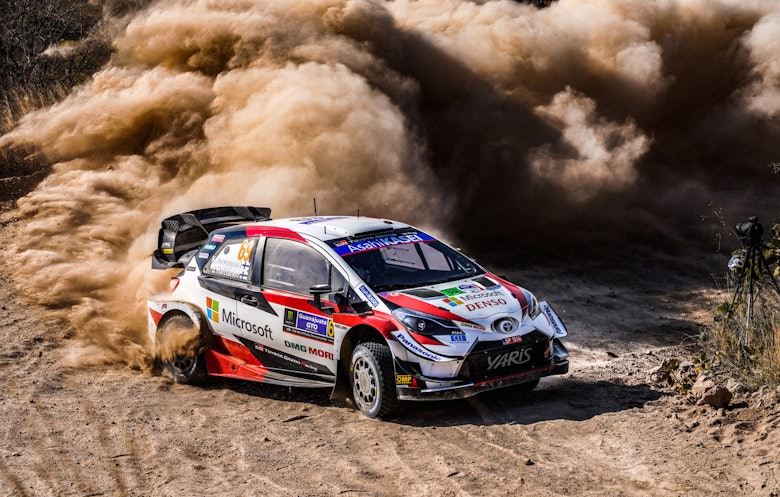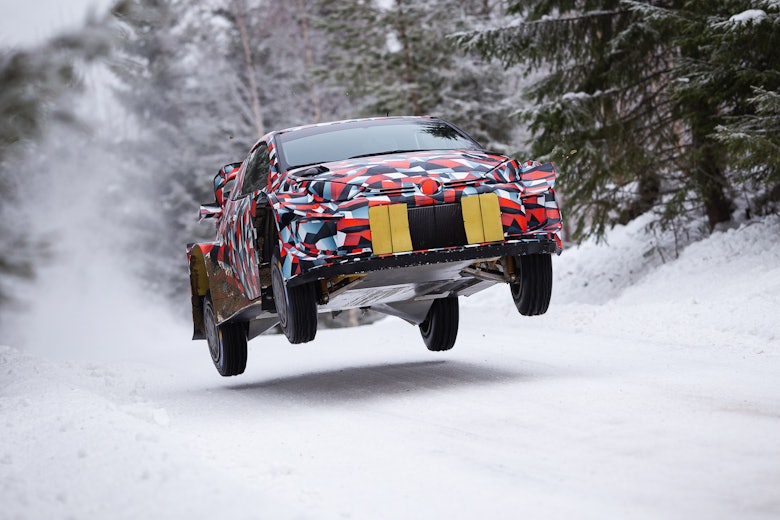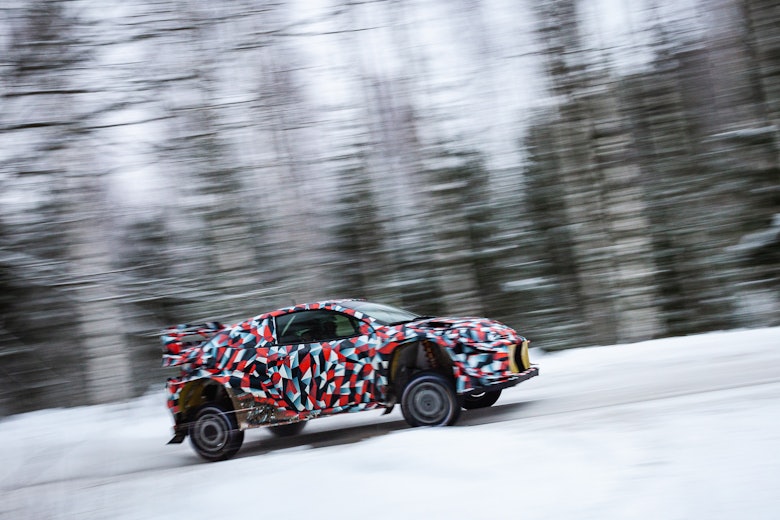World Rally Car testing is – understandably – banned by the FIA at present. But one team could be doing some running given where it’s based, and the fact it can’t do so with its new car is giving it a dilemma that could have very big implications, as David Evans explains:
The current generation of World Rally Cars have completed 793 stages since the start of the 2017 season. Give or take. That’s my get out clause in case somebody better at math than me (most of you) has totted up differently or included a neutralized stage I didn’t.
One car has spent 40% of that time at the top of the timesheets. Which one? Surely not the one still being bolted together in the days before the start of round one just over three years ago?
Yup. Toyota’s Yaris WRC.
Want an even more impressive stat about the Finn-built machine? Then take out year one for a car and a team still finding their feet in the championship. The result? The Yaris WRC has led for 52% of the 542 stages.
Since the start of 2018, Toyota has been classified P1 for – give or take – every other stage.
Those numbers in addition to world championship titles for the last two years have helped cement the Yaris as the car that defines this fastest-ever generation of rally machines.
More of the same this year? Coronavirus-permitting, absolutely. Three cars in the top four and a clear lead in both championships three rounds in would indicate nothing’s changed.
But it’s about to.

Toyota has started 2020 in fine form with its current car (Photo: André Lavadinho)
Furrowed brows abound in the team’s Puuppola base.
And not without good reason. The FIA’s decision to suspend testing until the end of May could well have killed off Toyota’s hopes of continued success next season.
The replacement for the current Yaris WRC, the GR Yaris WRC – the car DirtFish delivered details on when it was out testing in Finland for the first time in February – is now parked up and going nowhere.
Currently, outside the Helsinki city limits, travel is still permitted in Finland and Toyota Gazoo Racing could have continued with its test program were it not for the FIA’s decision.
Undoubtedly, there are conflicting views about whether anybody should be moving about these days and I’m not here to make moral or medical judgements on anybody. All I’m doing is presenting the evidence to demonstrate why Toyota’s likely to be in trouble when it comes to next year.
The GR Yaris WRC did some gravel running at Toyota’s pre-México test in Spain last month, but not much. The 2021 car only ran in the afternoon in an effort to preserve as much gravel on the test road as possible (the team was recreating the loose conditions all three drivers would experience on the Guanajuato stages) to help refine the event car set-up.
Since then, it hasn’t really turned a wheel.
Yes, there are those who labor under the misapprehension that TGR is running Yaris rally cars night and day on the super-fast tacks north of Jyväskylä.
That might be the case as Rally Finland approaches, but right now those roads aren’t really a lot of use to anybody. While much of Europe enjoyed rising spring temperatures, central Finland remained locked down in winter with snow and freezing overnight lows. In these conditions, the roads are neither one thing or another: too cold for Finland and, ordinarily, too warm for Sweden.
Running without studs would be too dangerous and running with studs would destroy the roads.

Image: Henri Vuorinen Photography
But once the snow’s gone, then Toyota would have been out and running the GR Yaris, finalizing it in time for the FIA’s homologation inspection in December ahead of a January launch.
What’s the problem then? If things ease in the middle of the year, surely four or five months is enough to finish the job? Especially for a team that has specialized in building these things in next to no time.
Predictably, TGR’s senior management wasn’t keen on discussing 2021 with DirtFish, but other technically minded folk in the championship could see the concern.
One source said: “You look at the calendar and think: ‘OK, if we get going in June or July, that’s enough time to get the car done for January’. It’s not.
“My understanding is that Toyota is still working through development parts – those parts will need to be reviewed, refined and potentially redesigned. And that’s kind of the crux of the problem here: once things move outside of your own circle and you have to start using suppliers than you can be in a world of pain.
“There’s a good deal of regional variation on where companies are at right now. Some have shut down completely, others are still working. If you’re relying on a supplier which has shut down, that could seriously compromise a project.”
Success, as we’re well aware, doesn’t provide the best breeding ground for sympathy and it would be fair to say Hyundai and M-Sport Ford won’t be tripping over each other to fight Toyota’s corner on this one.
They would, I’m sure, point out that a lightly evolved version of the current Yaris WRC would comfortably see Toyota to the odd win and a championship challenge in 2021.
That can’t happen. With a new Yaris road car coming next year, it’s the GR Yaris WRC or nothing. Toyota headquarters does not want to see its factory team using a previous-generation car in the World Rally Championship.

Image: Henri Vuorinen Photography
Nobody would try to deny Toyota’s the best resourced team in the service park right now. But it’s worth noting, it’s being pulled in three directions: running the current program (admittedly, this isn’t overly taxing at the moment…), developing the 2021 car and finally there’s the small matter of the all-new 2022 hybrid machine.
The resource – split between the team base in Finland and the TGR factory in Tallinn, Estonia – is impressive, but will struggle under the weight of three projects in these socially distanced times.
As I write this piece, I can just imagine folk flexing their fingers in the direction of their own keyboards with replies laced with derision and criticism of such stories being raised at such times.
That’s absolutely fair enough.
But this risk is real. Toyota’s putting significant marketing spend behind the GR brand and the roadgoing, four-wheel drive Yaris is right at the heart of that. Compromise that car and what does that mean for Toyota’s WRC program moving forward?
Actually, let’s not go there.
What’s the answer?
Well, when I dived into this piece, I did so to shine a light on the flip side of what’s widely and understandably regarded as sensible temporary legislation.
In short, I don’t know. In Frankfurt, home of the Hyundai WRC team, and in M-Sport’s part of the UK, moving about to take a rally car testing is not going to happen any time soon. So why should Toyota be allowed to do that, just because of a slightly more liberal governmental approach to the current situation where it’s based?
I don’t think it should. That is, I don’t think the team should be allowed to test the current car. But is it worth investigating some method to helping it solve the 2021 conundrum?
For the reasons outlined above, it’s got to be worth a thought.





